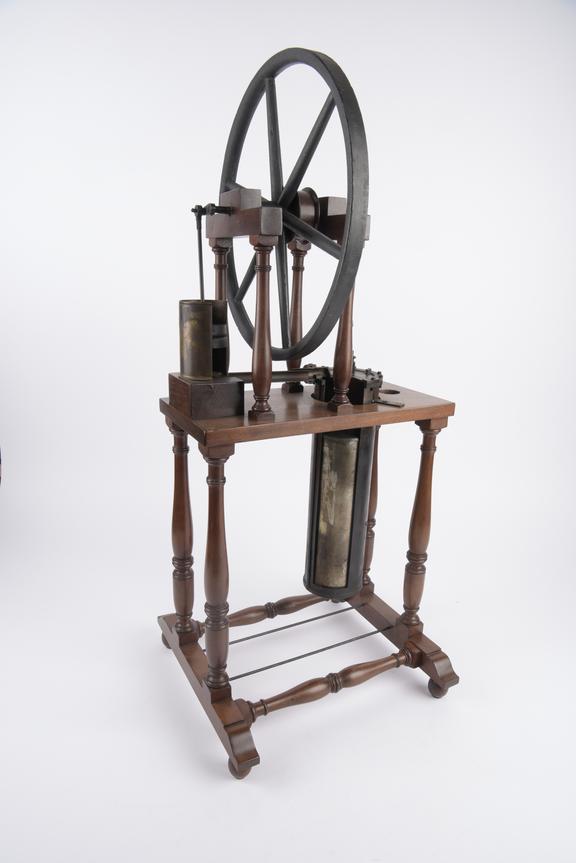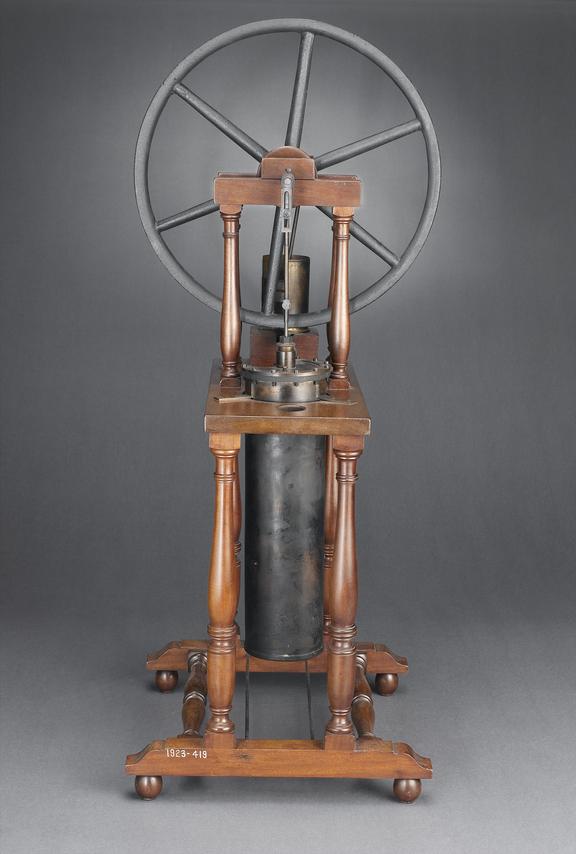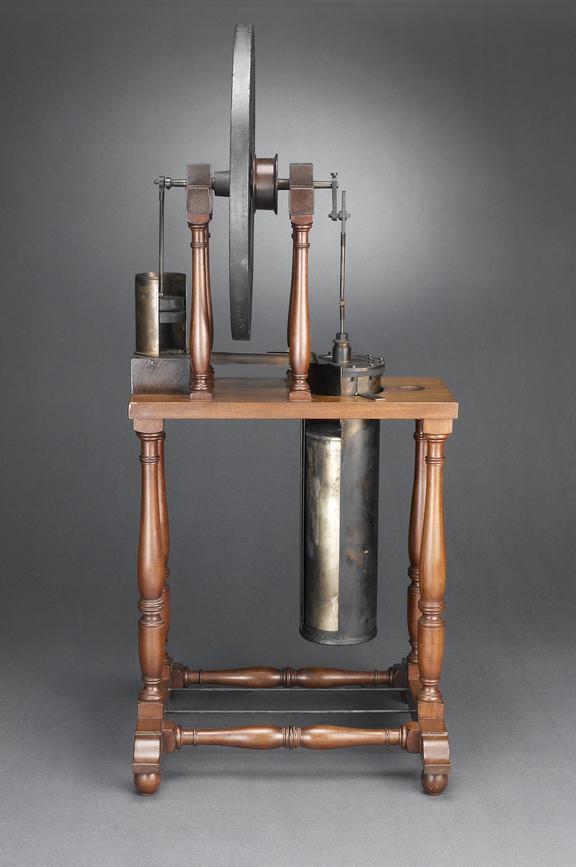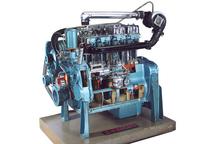







Model of Stirling's hot air engine, c. 1816, cylinders sectioned.
Sectioned copy of one of the first hot air engines to work on the Stirling cycle, which is embodied in Robert Stirling's Patent No.4081of 1816. The original is in the Royal Museum, Edinburgh. It is one of two similar models believed to have been made by or for Stirling c. 1816. In the Stirling engine, air is heated in a cylinder. As this happens, the air expands and pushes against a piston, causing it to move. The air is then cooled, allowing the cycle to begin again.
Details
- Category:
- Heat Engines (non steam)
- Object Number:
- 1923-419
- Materials:
- wood, cast iron, brass and tin plated
- Measurements:
-
overall (estimate): 725 x 305 x 305 mm
overall weight:
- credit:
- Young, E.T.




